Imagine willingly offering yourself up as a meal to one of the most powerful predators on Earth—a 20-foot green anaconda. For most of us, the thought is unimaginable, but for Paul Rosolie, a conservationist and author, this wild endeavor was all part of his mission to raise awareness about the Amazon rainforest’s plight. Back in 2014, Rosolie embarked on a jaw-dropping journey to be “eaten alive” by an anaconda. However, things didn’t go exactly as planned, and the experience quickly turned into a terrifying ordeal he would never forget.
Why Would Anyone Volunteer to Be Eaten Alive?
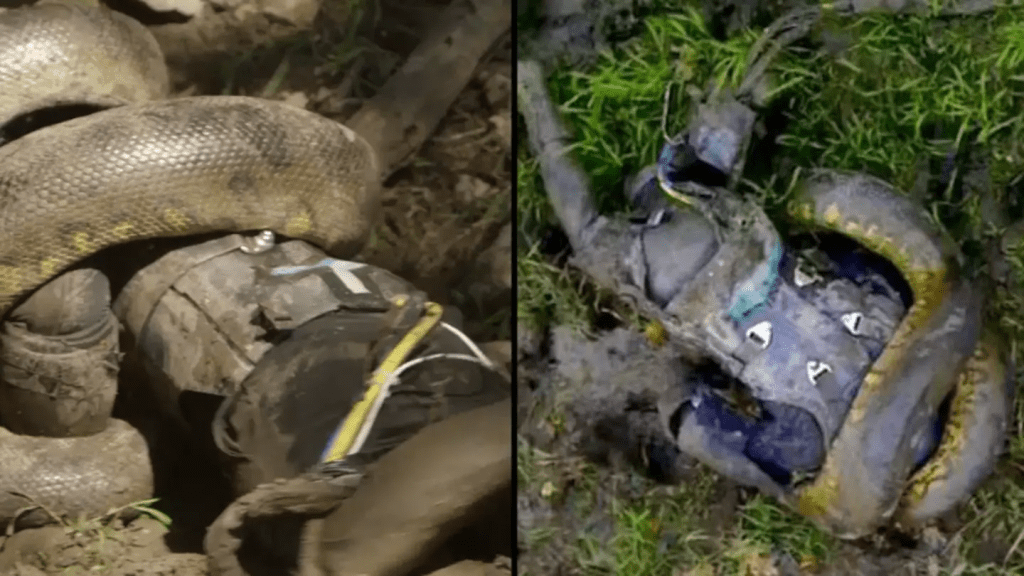
Rosolie’s mission wasn’t just a publicity stunt. As the founder of Junglekeepers, an organization dedicated to preserving over 77,000 acres of Amazonian habitat, he was desperate to draw attention to the rainforest’s destruction. The Amazon is home to countless species, including the green anaconda, the world’s largest and heaviest snake. As deforestation continues to decimate these vital ecosystems, Rosolie knew he needed something dramatic to shock people into action.
So, he came up with a daring idea: allow himself to be swallowed by a green anaconda while wearing a custom-made carbon-fiber suit. This bold act, featured on the Discovery Channel’s Eaten Alive, aimed to highlight the power of these majestic creatures and the importance of their conservation.
The Hunt for the Perfect Snake
Finding the right anaconda wasn’t an easy task. Rosolie, along with a 10-person team, scoured the Peruvian Amazon for weeks in search of a candidate large enough for the experiment. Eventually, they found a suitable contender: a massive female anaconda measuring 20 feet long and weighing 18 stone (252 pounds).
The team’s excitement was palpable, but Rosolie knew the real challenge was yet to come.
The Carbon-Fiber Suit: A Lifesaving Innovation
Before the encounter, Rosolie donned a custom-built carbon-fiber suit designed to protect him from the snake’s crushing coils and digestive acids. The suit was a marvel of engineering, incorporating:
- Reinforced armor: To withstand the snake’s constriction.
- Built-in cameras and radio microphones: Allowing the team to monitor him throughout the ordeal.
- An oxygen supply system: Ensuring he could breathe even if swallowed.
To make himself an appealing “meal,” Rosolie was also covered in pig’s blood, mimicking the scent of the snake’s natural prey. The stage was set, and Rosolie crawled into the forest, ready to face the green anaconda.
The Terrifying Encounter
Approaching the snake on all fours to mimic the movements of a wild boar, Rosolie quickly caught its attention. The anaconda wasted no time latching onto his head and wrapping its powerful coils around his body.
“I’m getting coils over me,” he told his team as the snake pinned his arms. Despite his calm exterior, Rosolie admitted his heart rate skyrocketed as the snake tightened its grip.
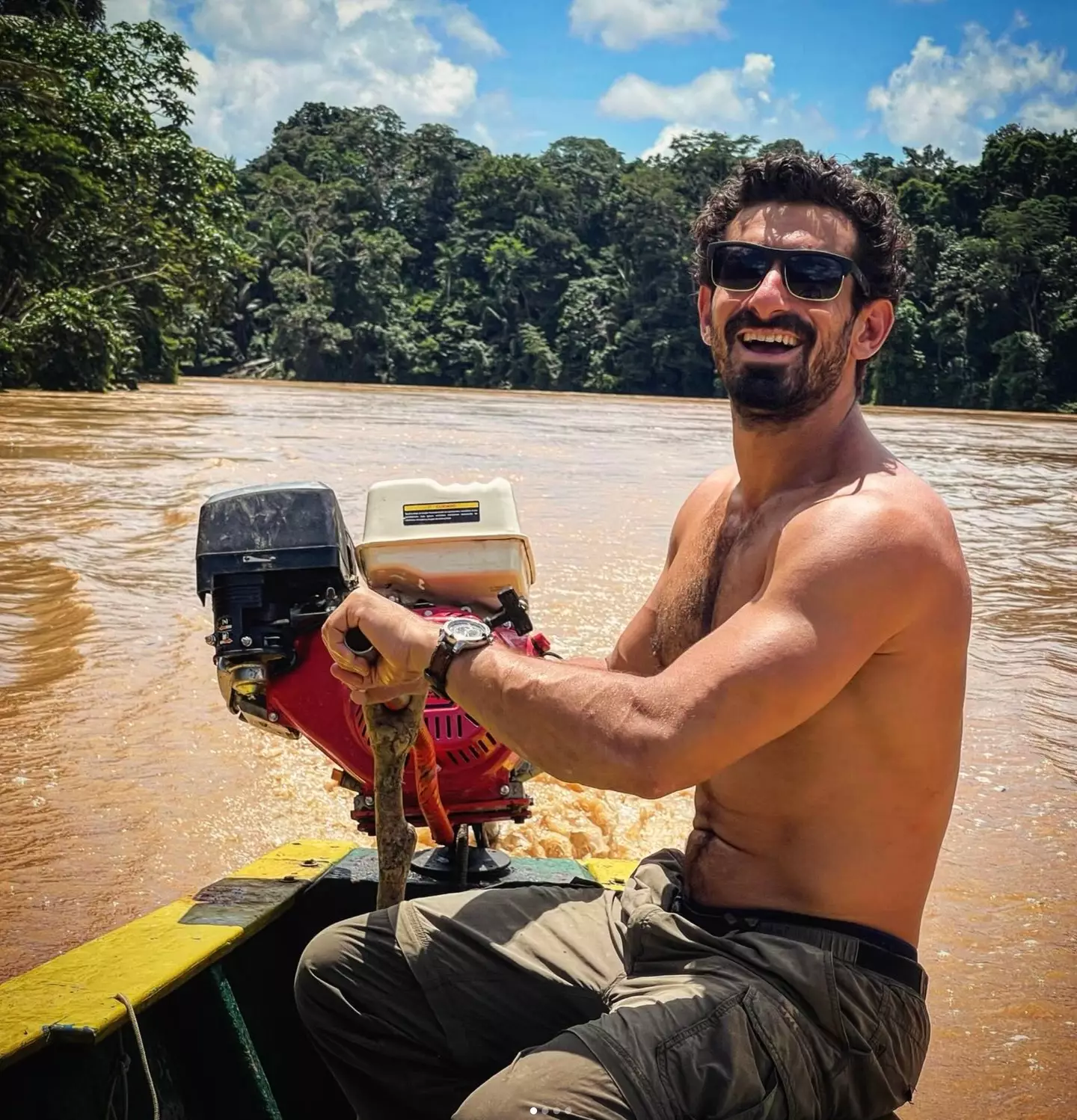
Paul Rosolie in the Amazon. (Instagram/@paulrosolie)
The snake’s strength was overwhelming. “She wrapped around me, and I felt my suit cracking and my arms ripping out of their sockets,” Rosolie later recalled. As the snake attempted to consume him, Rosolie experienced a surreal moment of darkness and pressure, all while desperately trying to remain calm.
Calling It Quits: The Danger Becomes Too Real
As the anaconda began to consume his head, Rosolie reached his breaking point. He realized the snake’s crushing force was dangerously close to breaking his arm. Despite the carbon-fiber suit, the pressure was too much.
“I’m calling it, I need help!” Rosolie shouted to his team.
The crew rushed in to pry the snake off him, ending the experiment before it turned fatal. Though only part of his head had been consumed, Rosolie admitted the experience was far more intense—and dangerous—than he had anticipated.
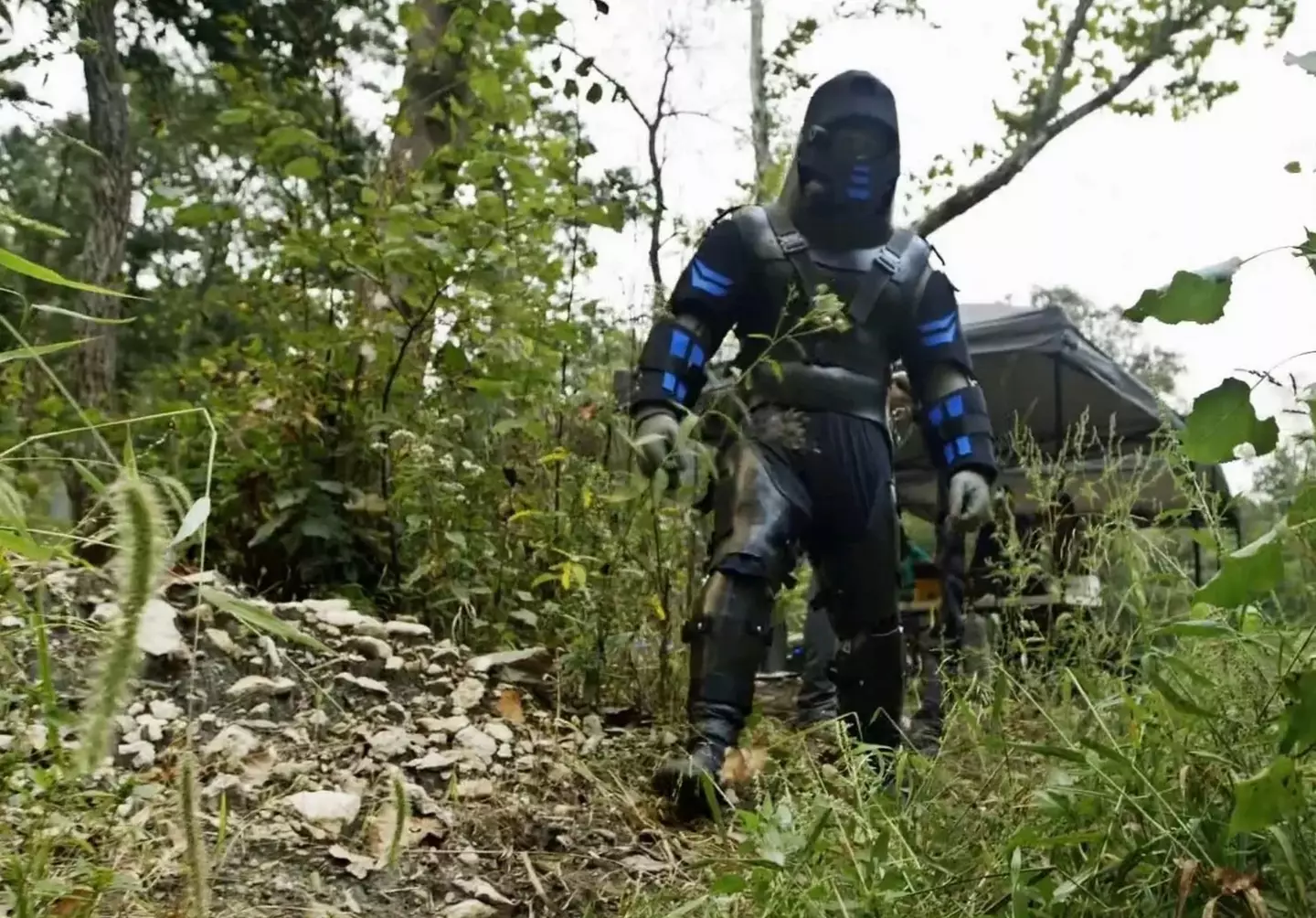
He wore a custom-made carbon fibre suit to protect himself (Discovery Channel)
What Went Wrong?
While the experiment garnered massive attention, it faced criticism from both animal rights activists and viewers. Some accused Rosolie of exploiting the snake for entertainment, while others questioned the ethics of the stunt.
However, Rosolie defended his actions, explaining that every precaution had been taken to ensure both his safety and the snake’s well-being. He emphasized that the primary goal was to showcase the power of these creatures and draw attention to their rapidly shrinking habitats.
“We took a lot of care,” he said. “It was really all about showing people the power of these snakes with the mission of protecting their habitats.”
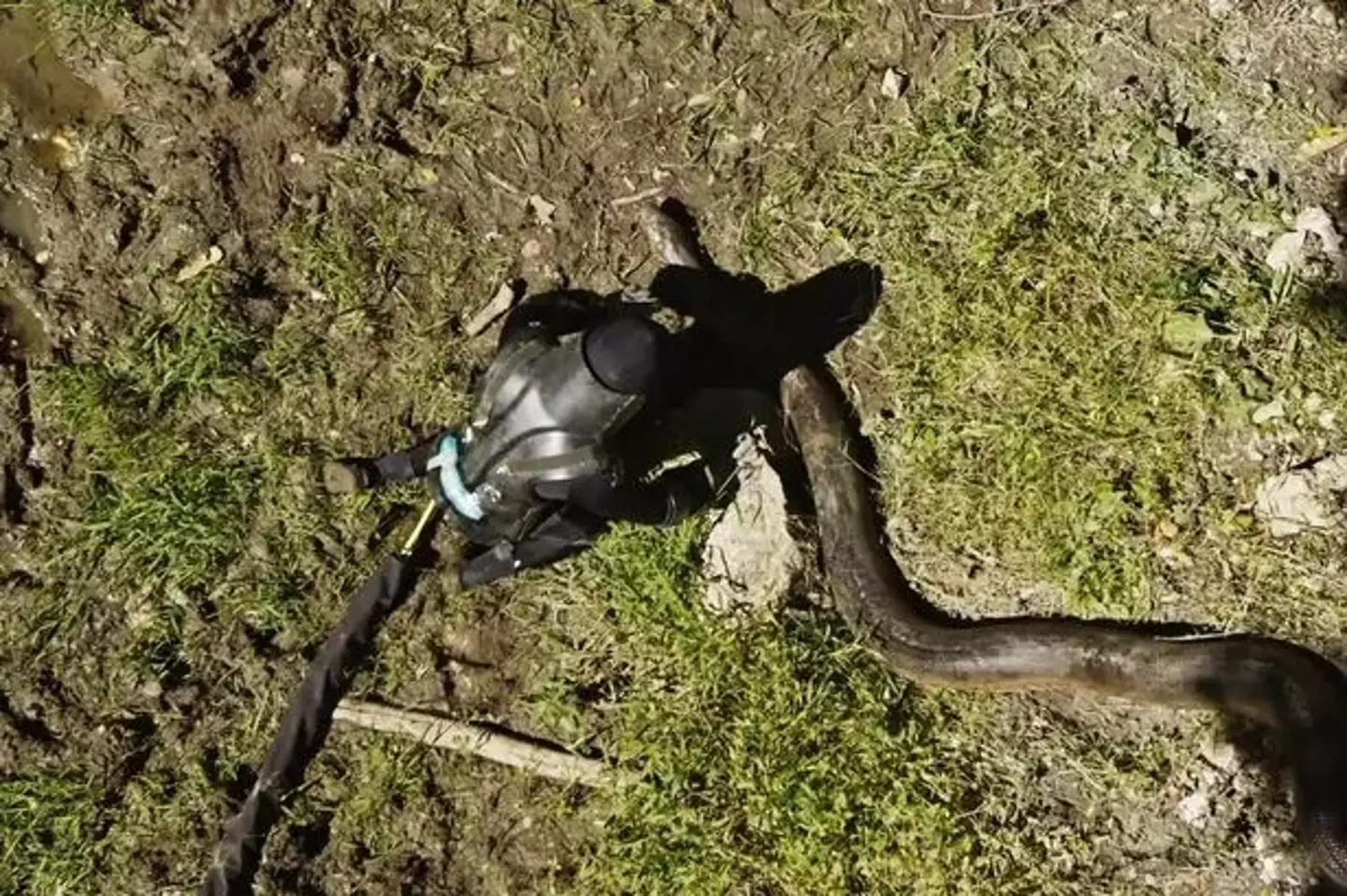
Rosolie approached the green anaconda on all fours (Discovery Channel)
Lessons Learned from the Attempt
Rosolie’s experiment may not have gone as planned, but it succeeded in sparking conversations about the Amazon rainforest and the threats its inhabitants face. The green anaconda, often misunderstood and feared, emerged as a symbol of the fragile ecosystem that desperately needs protection.
Here are some takeaways from Rosolie’s attempt:
- The Power of Shock Value
Dramatic acts can draw significant attention to important causes. While unconventional, Rosolie’s stunt raised awareness about deforestation and the Amazon’s biodiversity. - Understanding the Role of Apex Predators
The green anaconda plays a crucial role in maintaining the balance of its ecosystem. Protecting these creatures is essential for preserving the Amazon’s natural harmony. - The Need for Conservation Efforts
Organizations like Junglekeepers highlight the urgent need to combat deforestation and protect endangered habitats. Rosolie’s experiment served as a reminder that action is needed now to save these vital ecosystems.
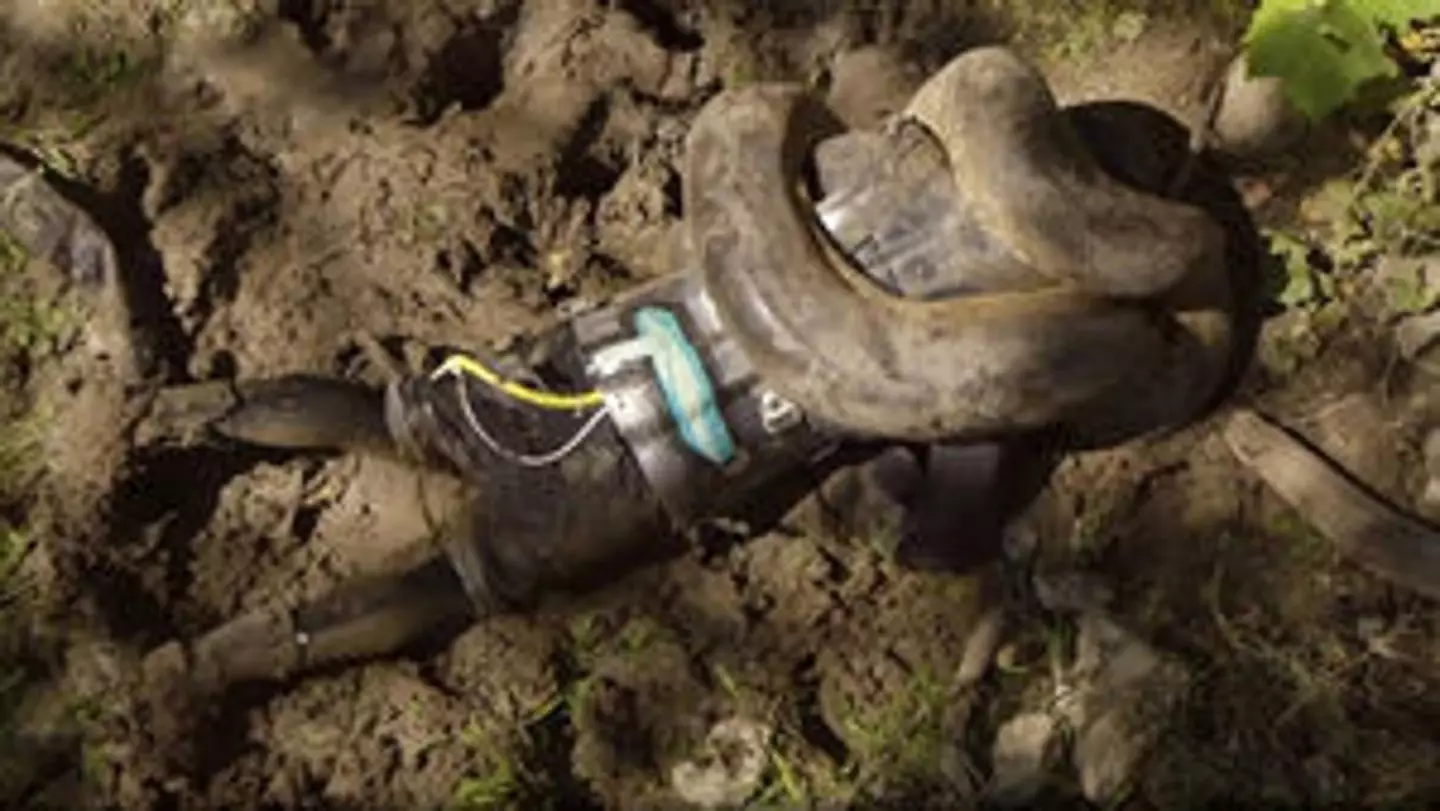
The 20ft long snake latched onto the daredevil’s head while wrapping itself around him (Discovery Channel)
A Bold Effort with Lasting Impact
Paul Rosolie’s attempt to be “eaten alive” by a green anaconda was more than a stunt—it was a desperate call to action for rainforest conservation. While the experiment didn’t go as planned, it achieved its goal of raising awareness about the Amazon’s plight and the importance of protecting its wildlife.
Rosolie himself reflected on the experience with a mix of awe and regret, recognizing both the power of the snake and the fragility of the ecosystem it represents. His story serves as a powerful reminder of the lengths we must go to preserve the natural world—and the courage it takes to face the unknown.
In the end, while the thought of being consumed by a green anaconda might send shivers down most people’s spines, Rosolie’s bravery highlights the urgent need to protect these magnificent creatures and their habitats before it’s too late.


